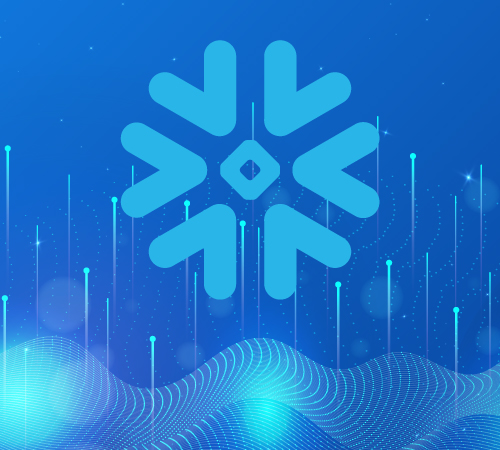Snowflake data lake vs. Data warehouse is a common question that business owners come across during data management. In the highly competitive business world, businesses are looking for ways to cost-effectively and quickly gather insights from the petabytes of data stored.
The two widely used big data storage solutions include data lakes and data warehouses. The two terms data lake and data warehouse are often used interchangeably; however, they are slightly different. In this comparison guide, we’ll reveal the main differences between the two data storage solutions that allow you to store and compute data.
What Is Snowflake Data Lake?
Snowflake’s cloud-built architecture supports your data lake strategy to meet specific business needs. The in-built Role-Based Access Control (RBAC) and Data Access Control (DAC) provide quick data access, query performance, and complex transformation. As the data is transformed through native SQL, governing and monitoring the access security becomes easy.
Another unique feature of Snowflake is the Massively Parallel Processing (MPP) that allows you to securely and cost-effectively store data. The robust architecture can handle data workloads of diverse formats in a single SQL query. Furthermore, a data lake easily transforms structured, semi-structured, and unstructured data from storage on a single architecture.
There are two ways you can utilize Snowflake:
- Either deploy Snowflake as your central data repository to supercharge performance, security, querying, and performance.
- Or you can store the data in Google Cloud Storage, AWS S3, or Azure Data Lake to speed up data analytics and transformation.
What Is Data Warehouse?
In simple words, a data warehouse is a system used for data analytics and reporting. It acts as a central repository to store large amounts of data gathered from different data sources. In a data warehouse, you can find highly transformed, structured data pre-processed and designed to serve a specific purpose.
However, before choosing a data warehouse, it’s vital to understand its architecture.
- Source Layer: The warehouse collects structured, unstructured, and semi-structured data relevant to the business needs.
- Staging Area: In the next layer, the warehouse extracts and cleanses data to structure it in a specific format.
- Data Warehouse Layer: It consists of a relational database management system that stores the clean data and the metadata.
- Data Marts: All the information related to specific functions of an enterprise is stored in the data mart.
- Analysis Layer: It supports access to integrated data to meet business needs. The entire data undergoes analysts to find hidden patterns or issues.
No matter which data management solution you choose, it’s important to understand the right storage, management, and data analysis criteria. If you want to understand which is better for you: data lake or data warehouse, contact the data experts of Inferenz.
Head-to-Head Comparison Between Data Lake & Warehouse
According to a GlobeNewswire report, the data warehouse market size will cross USD 9.13 billion by 2030. On the other hand, the data lake market is all set to cross USD 21.82 billion by the end of 2030. That said, it is clear that data lakes are becoming more common to store data compared to warehouses.
But before you choose, let us compare the two data storage solutions — data lake and data warehouse — based on different factors.
Storage
A data lake stores raw data in its native format and is only transformed when it has to be used. On the other hand, a data warehouse stores data after its extraction from transactional systems. All the data in the warehouse is clean and transformed as per business needs.
Data Capturing
Data lakes collect and store real-time data in raw and unprocessed data formats. They capture all forms of data, irrespective of their formats or sources. Conversely, data warehouses capture only structured information and store them in specific schemas.
Data Timeline
Cloud data lake consists of raw data, which has no current use. In the future, data analysts can access and analyze the data to gather insights. Conversely, a data warehouse contains processed data. Hence, the source is particularly captured, analyzed, and used to serve the specific purpose in real-time.
Users
Data lake generally suits users with knowledge of advanced analytical tools. Data scientists, data engineers, and analytical data engineers use their big data tools to work on varied large datasets. However, a data warehouse is suitable for operational users as it can answer business-specific questions quickly.
Tasks
As a data lake contains information from disparate sources, it is suitable for data analytics. Users can access large volumes of data and seek in-depth data insights. On the other hand, data warehouse primarily focuses on some predefined business questions. In short, a data lake can help users with multiple tasks, while a data warehouse generates specific reports.
Schema Positioning
Data lake follows a schema-on-read strategy, while data warehouse follows a schema-on-write strategy. The “Schema-on-Read” structure means schema is defined after data storage in a data lake. Conversely, the “Schema-on-Write” structure means schema is typically defined before data storage in a data warehouse.
Which Is Better: Snowflake Data Lake Vs. Data Warehouse?
The right choice between a data lake and a cloud data warehouse will depend entirely on business needs. For instance, if you’re an eCommerce company with multiple departments, data warehouses can be a good option to get all important data at a single location.
On the other hand, if you’re a social media company where the data is usually unstructured, a data lake can be a good choice. Often, many businesses use both storage options to build data pipelines.
A data lake and a data warehouse combination will help you collect, store, transform, and analyze business data under a single platform. If you’re still confused between Snowflake data lake vs. Data warehouse, get in touch with the experts of Inferenz.
FAQs About Data Lake Vs. Warehouse
How is Snowflake different from other data warehouses?
Snowflake enables faster, more flexible, and easier-to-use data storage, processing, and analytic solutions than other data warehouses.
Is Snowflake a database or ETL?
Snowflake supports ELT and ETL, and it works effectively with various data integration tools, including Talend, Tableau, Informatica, etc.
What are the benefits of a data lake over a data warehouse?
Data lake helps in real-time decision analytics as it utilizes large quantities of coherent data and deep learning algorithms.















